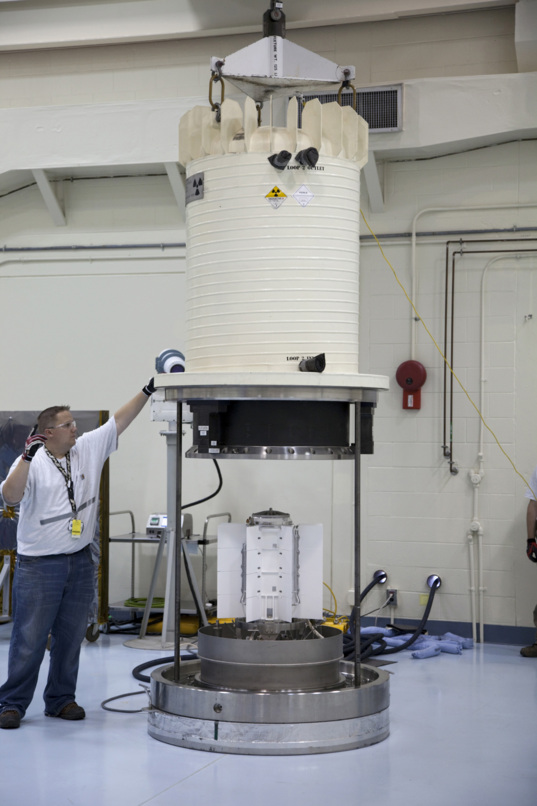Emily Lakdawalla • Nov 28, 2011
How did they make the nuclear power source for the Curiosity rover?
Maybe it's because I was a kid during the Cold War; I always assume that information about anything nuclear only comes out on that "need-to-know basis." So it was a nice surprise to be pointed to this informative video about how it was built. It's from the Idaho National Laboratories, which assembled and tested Curiosity's radioisotope power source before shipping it to Florida for installation. (Even funnier for this Cold War kid, the person who noticed and posted the video about American nuclear technology is from the Czech Republic! How times have changed!)
The video is narrated by Steve Johnson, director of the Space Nuclear Systems and Technology Division (how cool a job title is that?), and it describes how the nuclear battery was built, beginning with hot little plutonium-filled iridium capsules. The initial steps are done inside glove boxes (some of them with engineers manipulating robotic hands while looking through 30-centimeter-thick "water windows"). But once the thing is inside its casing, the engineers need no extraordinary protection from it -- they are working in polo shirts!

NASA / Frankie Martin
Opening the cask on Curiosity’s MMRTG
In the high bay of the RTG storage facility at NASA's Kennedy Space Center in Florida, a Department of Energy contractor employee guides the external and internal protective layers of the shipping cask as they are lifted from around the multi-mission radioisotope thermoelectric generator (MMRTG) for NASA's Mars Science Laboratory mission. The MMRTG no longer needs supplemental cooling since any excess heat generated can dissipate into the air in the high bay. The MMRTG will generate the power needed for the mission from the natural decay of plutonium-238, a non-weapons-grade form of the radioisotope. Heat given off by this natural decay will provide constant power through the day and night during all seasons. Waste heat from the MMRTG will be circulated throughout the rover system to keep instruments, computers, mechanical devices and communications systems within their operating temperature ranges.Support our core enterprises
Your support powers our mission to explore worlds, find life, and defend Earth. You make all the difference when you make a gift. Give today!
Donate

 Explore Worlds
Explore Worlds Find Life
Find Life Defend Earth
Defend Earth

